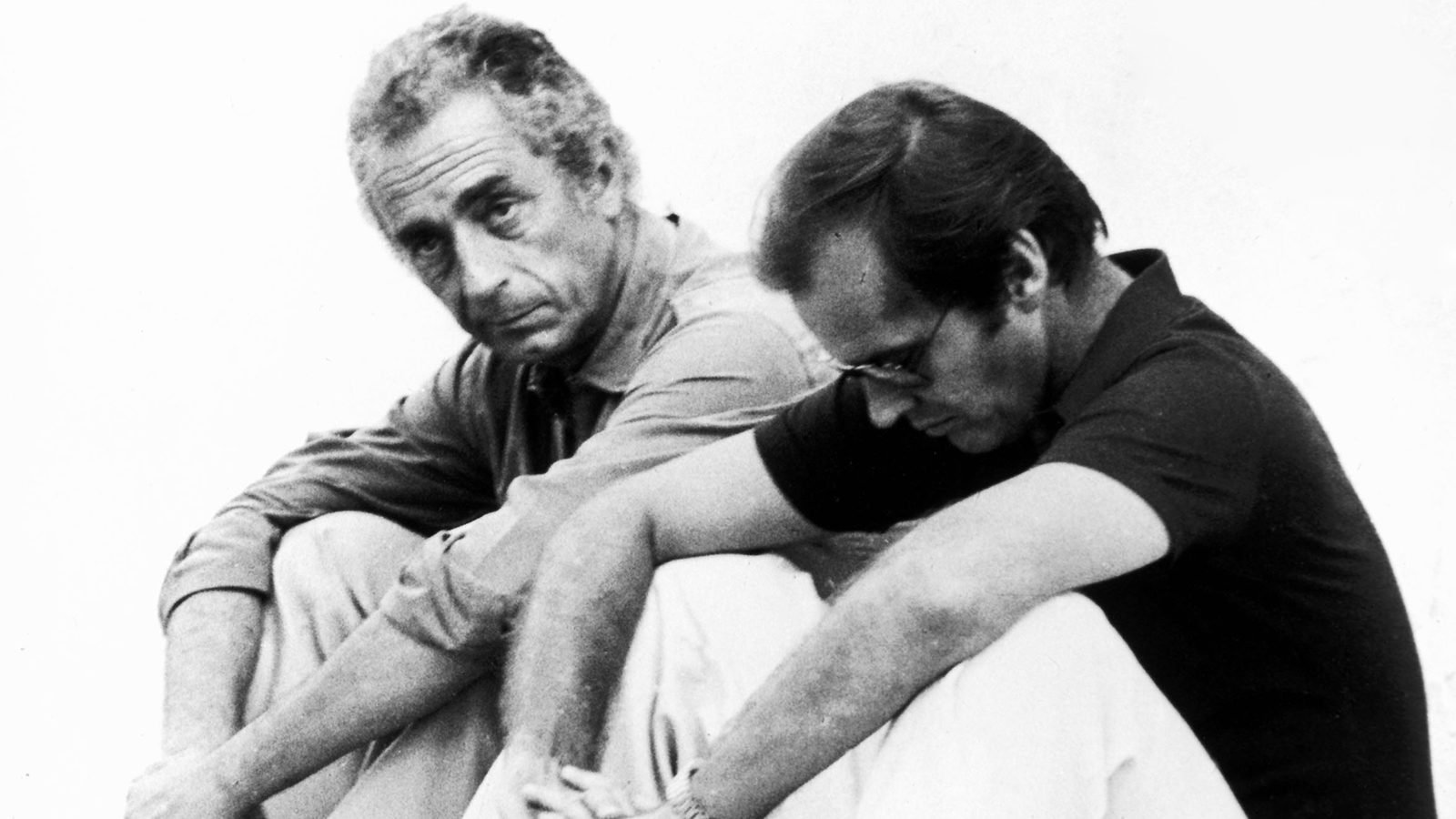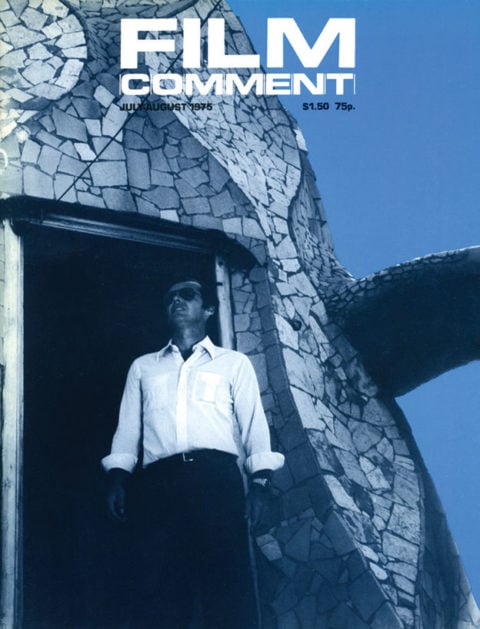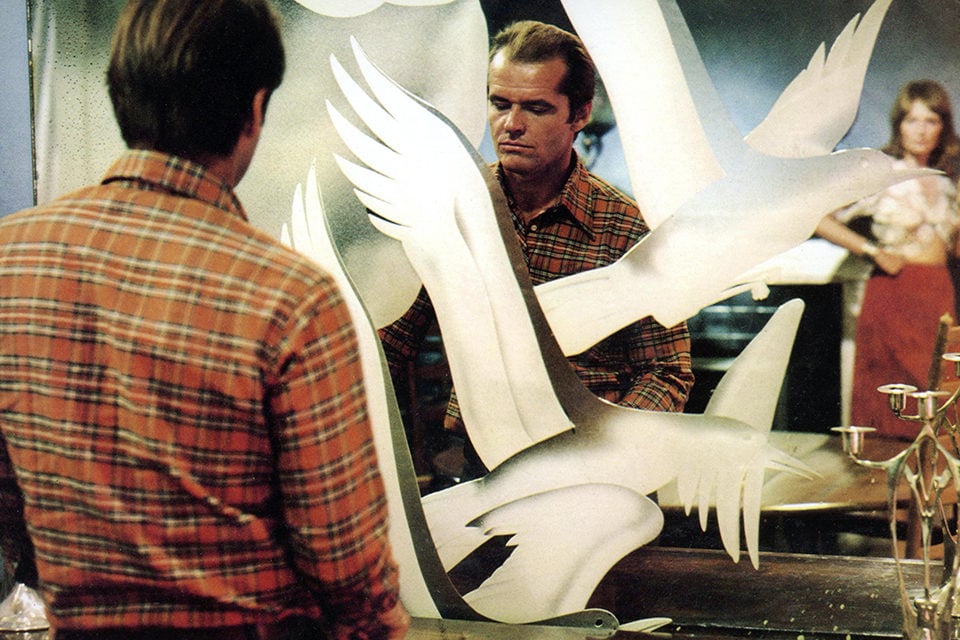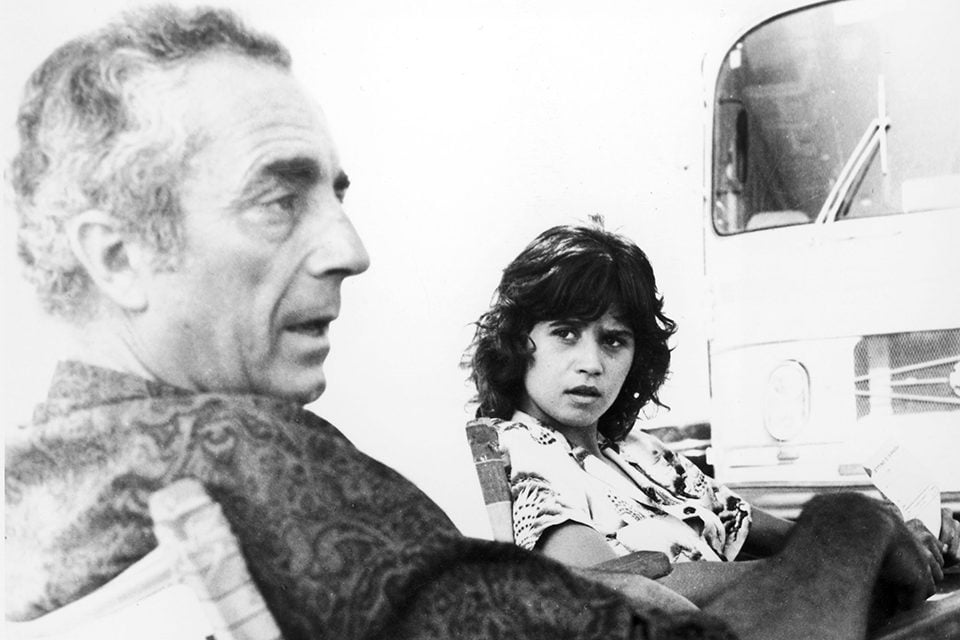
Interview: Michelangelo Antonioni
My interview with Michelangelo Antonioni was at 10 a.m. I walked down through Central Park. The animals in the zoo were enjoying their early morning moments of privacy. The white polar bear was bathing himself. He seemed more like an overweight child performing aquatic tricks than a caged animal.

Antonioni’s suite was on the twenty-second floor of the Sherry-Netherland Hotel. He invited me to see the view from his window. Looking at the city from this height, I felt like a stranger. The city was unrecognizable to me. Antonioni smiled and said, “It’s beautiful, isn’t it?”
Antonioni: I think that it would be interesting for this interview to take the form of long statement-questions and short answers. It is also the only possible form. I cannot use words. A director in some way is a man of action even if this action is intellectual. My life is divided into two kinds of experiences, practical and intellectual. They both push me to do something and behave in some way, but I don’t know why. It is something unconscious. I can’t explain. You know Pirandello? Pirandello was once asked, “Why does that character behave like that?” He replied, “I don’t know why, I’m only the author.”
Epstein: In thinking about the film this morning, I had the feeling that I had seen certain scenes before. I realized that it was in Camus’s The Stranger. Standing by the window one Sunday, Meursault records in his apathetic voice so like Jack Nicholson’s, life as it passes by in the street. Also, for the first time, the murder of the Arab achieved a clearer reality for me. I understood Meursault’s explanation about the five bullets: it was the sun, it was the fact that he was there at that particular moment.
M.A.: Someone else also made this comparison. I think that it is fundamentally wrong. Meursault has “existential” problems, abstract problems. My character, David Locke, has very concrete problems. He is frustrated with his life. His marriage is a failure. He is not completely satisfied with his job even if done successfully. He is unable to be more committed politically and he does not know why. Locke’s situation is not the same as the Stranger’s.
R.E.: One of the things that struck me about the characters in The Passenger is that these people live at a distance from themselves and from each other. We are told that Locke and Rachel have a child. However, we never see the child, and there is no reference made to this child by them. Language seems to describe the character, but the character listening to the words is a stranger to that description.
M.A.: This is deliberate. Rachel is critical of her husband because of this. At the end of the film she says that she never knew him. Well, perhaps, he never really knew her. They thought of each other in certain terms, but they may have been mistaken.

Jack Nicholson in The Passenger (Michelangelo Antonioni, 1975)
R.E.: I find myself making cross-associations with your film. Are you familiar with the photographs of Edward Weston?
M.A.: I know him and have seen some of his work.
R.E.: I think that what instinctively leads me to make this connection is that both you and Weston are interested in the perceptual relationship between the viewer and the represented world of the cinematic frame and the photograph. When I look at a Weston photograph, I often have the uneasy feeling that a human being is present but not immediately visible. I find myself searching the landscape, at first with the intention of restoring the human figure’s central position within it, and then rather ashamedly, allowing the elements to be seen as they are in their relationship to one another.
M.A.: Every audience is tied to certain habits in the way that they look at film. If they don’t have the same articulation of scene, they get lost. This makes me crazy. Your problem in viewing Weston’s photographs is the same question of habit.
When I see The Passenger now, I ask myself why I did a particular scene in that particular way. Only after the completion of the film could I explain why I chose that solution to a given sequence. However, while I am shooting, it is instinct that I follow. The only need that I had was to be free with my camera . Usually we follow one person, or the camera moves between two people in dialogue. In this film, I did not want to maintain one style. I wanted the technical solution to each problem to come to me intuitively without any preconceptions. There isn’t any unity of style. The unity of the film comes from inside the film, itself, from the relationship between me and the world and between me and my characters.
R.E.: You have initiated the audience into a way of perceiving. We become aware that there is a functional similarity between the eye of the audience and the eye of your camera. As we sit stationary in our seats staring into the world of your film, so your camera fixes itself on a particular space, seemingly unconcerned with the movements of the people operating within that space. The camera no longer has a subordinate relation to character or plot. It becomes a character with a dynamic power of acting upon the audience.
Your camera can be very humorous in its disengagement. For example the sequence where Nicholson and Schneider are having lunch in a sidewalk cafe. You open with a car moving from right to left and another car moving from right to left and another car moving from left to right. The camera then moves back and reveals the bordering sidewalk where the two of them are seated, two people in a busy street scene. I found myself surprised at seeing them, surprised that they were there at all.
Or the sequence when Nicholson walked down a street, moving from the center of the screen and disappearing around the corner of the celluloid. I was tempted to peer behind the screen in order to find out where he was going. The camera is totally detached from its own world.
M.A.: This was an idea that I had. Sometimes, I realized that I was following this same idea after the sequence was shot. This means that the idea was inside me and not theoretically formulated.
This is a film about someone who is following his destiny, a man watching reality as reported, in the same way that I was watching him, in the same way that you are pursuing me. You could go back and find another camera watching me and another one watching the other camera. It’s surrealistic, isn’t it?
R.E.: What hope is there to get beyond the images? We see countless photographs in the newspapers of mutilated bodies, of starving children. We hear the news repeated over and over again, every fifteen minutes on the radio. We titillate ourselves nightly with violence and commercials offered by television .
We are confronted in your film with an execution.
M.A.: This is a very ambiguous piece of film. Locke is doing a documentary film on a guerrilla movement within an African country. He is trying to get more and more politically involved. We can think that he chooses to shoot the execution because he knows that it will be visually impressive. He may have chosen to use it for sensationalism but perhaps not. We don’t know, and perhaps he, himself, did not know what he wanted. I begin the sequence with a full screen as though it was happening that moment. And then we see it viewed by the television producer on the moviola for his documentary of David Locke’s life as a journalist. This is another way that I was able to be free with my camera. I recorded the execution twice so that the audience’s perception of that event would be different each time that they watched it. The format on the screen was different from the format on the moviola . It was as though I was filming the execution myself. And then it was watched by Knight and Rachel on the moviola as film shot by Locke.
This was a film of an actual execution. Please don’t ask me anything about it. I cannot tell you.

Michelangelo Antonioni and Maria Schneider on the set of The Passenger (Michelangelo Antonioni, 1975)
R.E.: You often make the audience unexpectedly adjust the levels of their involvement. The tone of your characterizations and the apparent disinterest of the camera as it records events create an atmosphere of distances between the characters and their world, and our personal relation to that projected reality. And then the execution scene.
Is it a real execution or is it staged by the film company? It is left to the audience to choose. We see at first the archetypal image of the martyr. It is only when we see the final shuddering of his body on the film replayed in the moviola that the horror of this man’s death touches us. The reality strangely assumes proportions that defy the perimeters of the moviola. The reel is suddenly stopped, and Knight apologizes for upsetting Rachel.
M.A.: My intention was to show something that shocked Locke.
R.E.: But was it not you that was shocked? How do we know what effect that shooting had on Locke? We know very little about these people. The camera has more of an effect on us than the people.
M.A.: You have to believe that scene. You have to imagine that Locke was shocked. He is of course a very conventional interviewer and this is what Rachel accuses him of. We are following Rachel who is trying to know him better.
We are in the same position as Rachel. We know no more. We have to imagine.
R.E.: But why do we have to imagine? You are probing levels of reality. You are dealing with many minds including the audiences’ trying to get beyond appearances that we offer each other day by day, that condition us through the media, through the language that we use to describe reality. And then you say that these people are coming closer in their understanding of one another. Your film closes with Rachel and the girl making statements about the dead man on the bed. That man for me lost his identity as David Locke. He had become as exchangeable as the original Robertson, as disengaged from his name as he was from his former life. Was this your intention?
M.A.: Yes. Things are what they are, they are what you see. We work with images not with words. I cannot use words. That is my problem.
R.E.: Dialogue is secondary in your film. Language that is used to describe what these people see and feel only achieves a reality when we are visually presented with that world. For example, the last seven minutes of the film. The girl asks, “What would it be like to be blind?” and Locke tells the story of the man who regains his sight. I thought to myself, why is he doing this, it’s so tired and flat. And then suddenly the cliches of our lives became very new, after we lived through the concluding moments of the film. The words, themselves, don’t say very much about the world. Then we see that world and the language becomes vital and truthful.
This is one of the interesting ironies. I am trying to use words to re-create your world when your world exists so completely on its own terms, visually.
M.A.: Yes.
R.E.: In the film you say that men don’t change, only places. Although there was extreme contrast in topography, it seemed as if it was one unfolding landscape. If man does not change, and if places are more or less alike, then what can we say about the future?
M.A.: The future? My God! I have nothing to say, I am waiting. I can imagine but I can say nothing.







